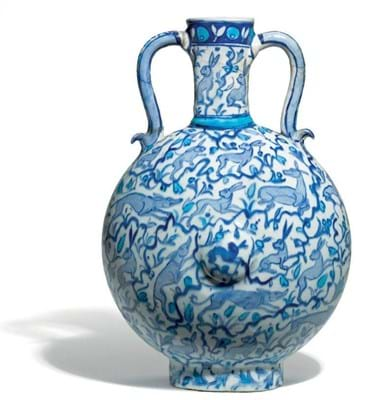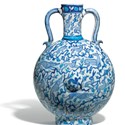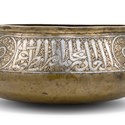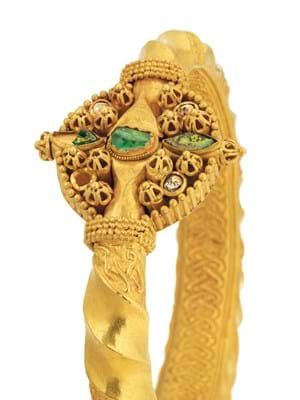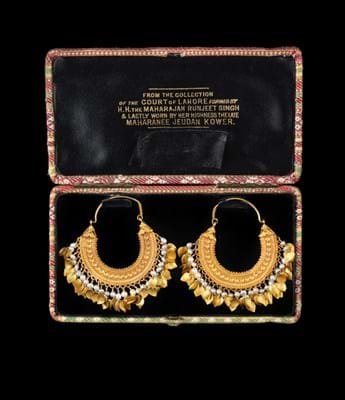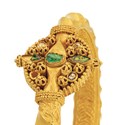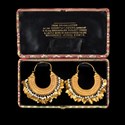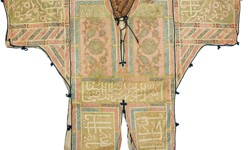The opening lot of Christie’s otherwise selective Art of the Islamic and Indian Worlds sale on April 26 was among the most eagerly contested of the series.
Estimated at £80,000- 120,000, nine fragmentary vellum folios of Qur’anic verse copied in the 8th century over earlier Christian text sold at £490,000 (plus premium).
This discovery dating to just the second century of Islam was made with the help of French scholar Eléonore Cellard.
The fragments are penned in a transitional style, between the later hijazi and early kufic scripts, with the gall ink words of a 2nd century Coptic bible still visible beneath.
The palimpsest was probably produced in Egypt at the time of the Arab conquest when writing materials were scarce.
Also at Christie’s an 11th century Fatimid gold armlet worked with repoussé and granulated decoration and set with an emerald and green glass beads sold at £365,000 (premium-inclusive £446,750) against an estimate of £100,000-150,000. It came with a provenance to Morocco c.1920, and thence by descent.
A 13in (32cm) Iznik blue and white pottery pilgrim flask, c.1545-55, sold for £550,000 (estimate £60,000-80,000) at Sotheby’s on April 25.
The only known example of this distinctive shape that imitates metal and leather prototypes, it is decorated in the early blue and turquoise of the mid 16th century with a fantastical mix of animals. An old inventory number is probably that of the dealer and collector Stefano Bardini (d.1922).
It was among the best performing lots of the sale, alongside a 14th century Mamluk brass bowl with a silver-inlaid thuluth inscription sold, from an Austrian private collection, at £270,000 (estimate £60,000-80,000).
Dominant institution
Sotheby’s offered four catalogues across three days. An unnamed institution bought eight of the top 10 lots in the Orientalist picture sale on April 24. These included, at £470,000, a view of the Oudaia gate in Rabat, painted during Edwin Lord Weeks’ third trip to Morocco in 1879. It was sold by the Portland Museum of Art in Maine having been a bequest to the institution in 1914.
A pair of pendant earrings previously owned by Maharani Jind Kaur (1817-63), mother of the last Sikh ruler of the Punjab, sold at Bonhams’ sale on April 24 for £140,000 (estimate £20,000-30,000).


